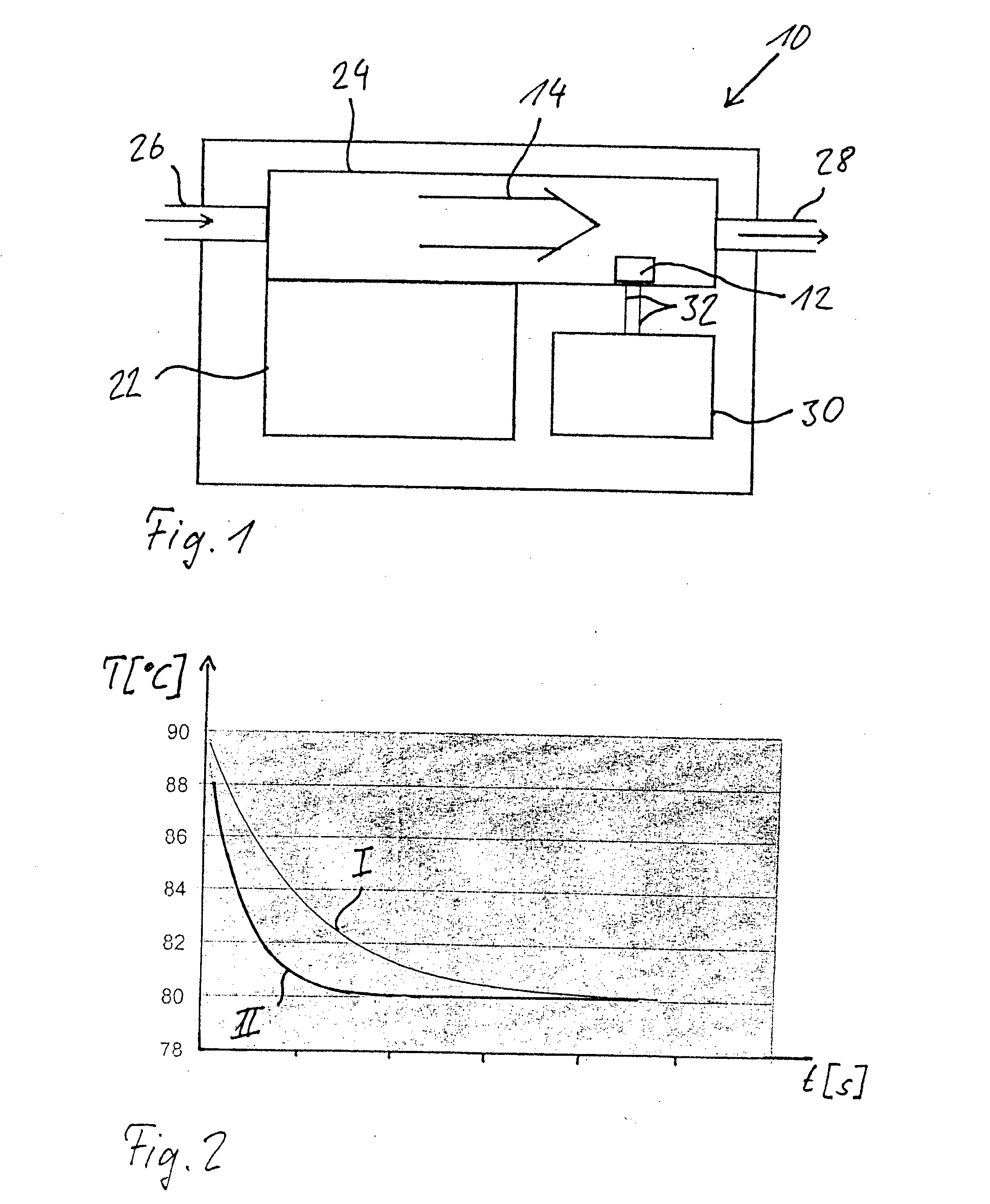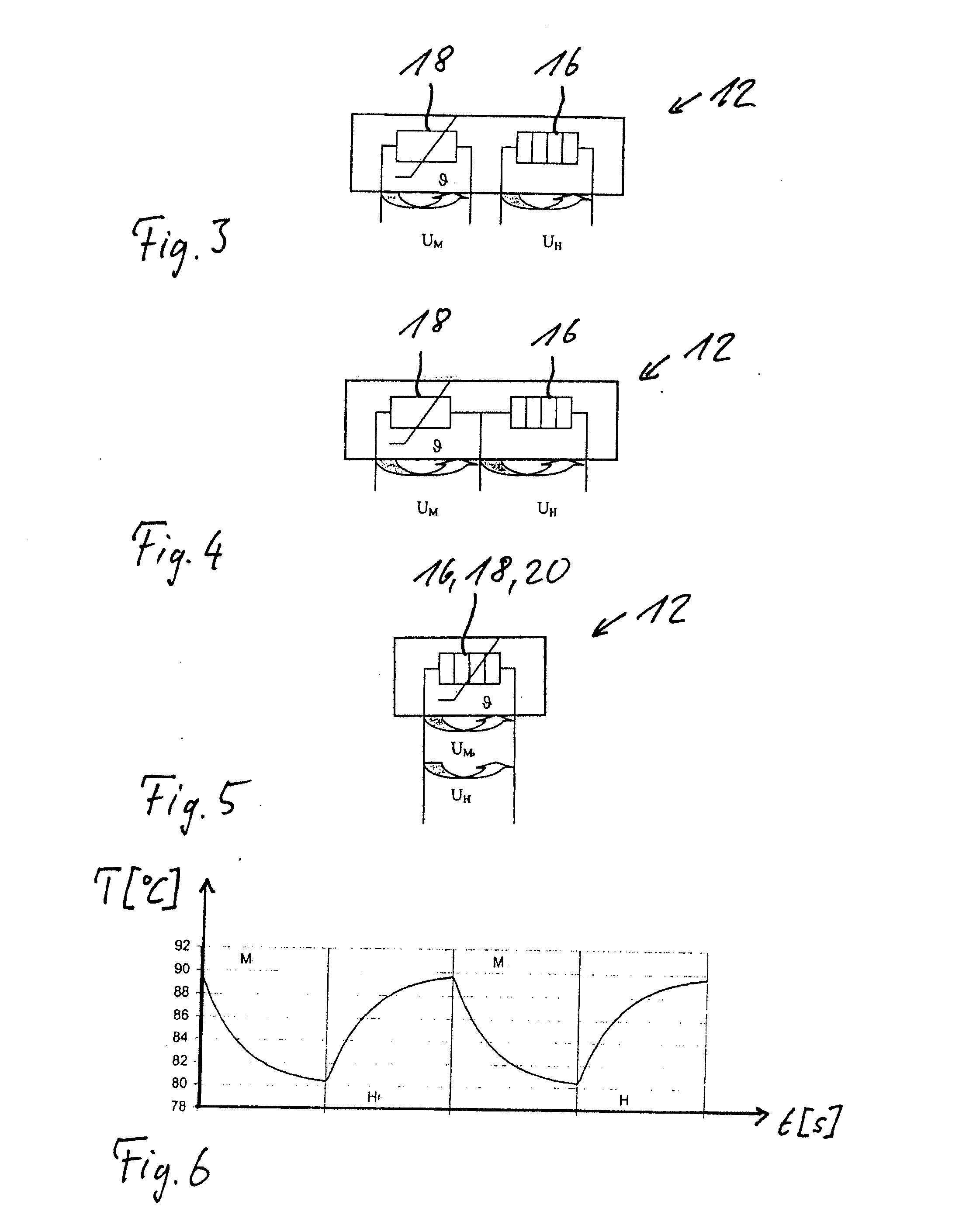Heating Device Using a Calorimetric Measurement Flow Sensor for Overheating Protection
a flow sensor and heating device technology, applied in the field of heaters, can solve the problems of high switch voltage, hardware or system failure, and use of the aforementioned known temperature sensors as overheating protection or temperature measurement,
- Summary
- Abstract
- Description
- Claims
- Application Information
AI Technical Summary
Benefits of technology
Problems solved by technology
Method used
Image
Examples
Embodiment Construction
[0038]The motor vehicle heater 10, shown only schematically in FIG. 1, can be especially an auxiliary and / or independent vehicle heater. The heater 10 has a burner 22 by which a heat transfer medium 14 which flows through a heat exchanger 24 can be heated. Here, the heat exchanger 24 has a inlet 26 and a outlet 28. A control device 30 controls all operation of the heater 10.
[0039]According to the prior art, in heaters of this type, conventionally, there are at least two temperature sensors. Protection against overheating, for example, in the form of a PTC, a bimetallic switch or a fuse-link, and a temperature-dependent resistor (NTC) for determining the actual temperature.
[0040]Instead of these two temperature sensors, as shown in FIG. 1, there is a single flow sensor 12 which works according to the calorimetric measurement principle and which is used both for overheating protection and also for actual temperature measurement. Although fundamentally other solutions are also possible...
PUM
| Property | Measurement | Unit |
|---|---|---|
| temperature | aaaaa | aaaaa |
| operating temperature | aaaaa | aaaaa |
| heat capacity | aaaaa | aaaaa |
Abstract
Description
Claims
Application Information
 Login to View More
Login to View More - R&D
- Intellectual Property
- Life Sciences
- Materials
- Tech Scout
- Unparalleled Data Quality
- Higher Quality Content
- 60% Fewer Hallucinations
Browse by: Latest US Patents, China's latest patents, Technical Efficacy Thesaurus, Application Domain, Technology Topic, Popular Technical Reports.
© 2025 PatSnap. All rights reserved.Legal|Privacy policy|Modern Slavery Act Transparency Statement|Sitemap|About US| Contact US: help@patsnap.com



